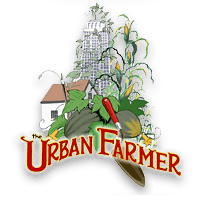Organic gardening is a close sibling to the field
of small-scale organic agriculture.
When the scientific and industrial developments of the mid to late 18th century began to view soil as a “sterile medium to hold plants” the advent of chemical farming was soon to emerge. Growing food became a “factory” oriented process in which chemical inputs were put into the fields to produce the greatest output of food possible. Little regard was given to the multitude of living organisms and their complex and important relationships within the soil and plant community nor the relationship of plants and soil to the local ecology.
In response to these developments, the organic farming movement emerged in the early 1900’s. Visionaries like Rudolph Steiner, the founder of the Biodynamic agriculture, and a host of others began to shape a very different view of the farming and gardening process. Central to the organic gardening philosophy is the view that the farm or garden is a living system and that the gardening process can benefit substantially by understanding how nature works.
While the fundamental requirement of organic gardens or farms is that they use no synthetic chemical fertilizers, pesticides or herbicides, there are several other key principles common to the organic growing environment:
- A focus on soil health and fertility including the regular addition of organic matter (i.e. compost) to the soil, and natural nutrients to the soil, preferably obtained on-site;
- Using techniques such as crop rotation, companion planting, and green manure (growing crops and turning them into the soil) to conserve soil;
- Learning to recognize “pests” and “weeds”, preventing the damage they can cause by methods such as keeping plants healthy and resistant, ensuring a host of natural competitors, using physical barriers such as row covers, hand-picking and the use of carefully selected organic pesticides as a last resort;
- Careful use and conservation of other key resources such as water.
The organic gardening movement has grown tremendously in the past two decades, due in large part to a growing awareness of the human health and environmental benefits of organic farming and gardening methods. Many different and specialized approaches to organic farming and gardening have developed over the years.
There are many excellent models of intensive organic food production available to the urban gardener. The Biointensive method has been carefully researched, developed and documented for over 30 years under the leadership of John Jeavons, author of How to Grow More Vegetables – than you ever thought possible on less space than you can imagine. The Biointensive method uses careful soil preparation (a “double digging” method) to create raised beds 4 to 5 feet wide. Soil organic matter is maintained through the regular addition of compost, and compost crops are grown within the beds themselves. Plants are grown very close together in an offset, hexagonal pattern that maximizes the use of space above and below ground. Crop rotation also helps to maintain soil fertility. The Biointensive organic method has achieved extremely productive yields (a full year’s diet for one person grown on 1000 square feet) while maintaining and improving soil fertility.
Growing in popularity is also the “No-Till Vegetable Gardening” method. This approach also uses permanent raised beds, but there is no cultivation (i.e. digging) of the soil at any time. Layers of organic matter including plant debris, weeds, leaves, straw, composts, newspaper etc. are placed onto the beds and seedlings are planted directly into the mulch. No-till methods are also referred to as lasagna gardening, sheet mulching, zero-tillage farming and natural farming, with each of these variants adding their own twist. No-till methods build a high degree of soil organic matter and do not disturb the critical population of soil organisms which are often reduced by tillage. It is also a lot less physical work for the small-scale gardener.
For more on the organic gardening and farming movement,
visit the following web-sites:
Ecology Action
Rodale Institute
Canadian Organic Growers
Planet Friendly
Going Organic Network of Alberta
Organic Gardening Forum
Organic food production is certified and controlled by many different organizations in Canada. For a summary of organic certification in Canada, go to the Canadian government’s web page on national standards for organic agriculture.
The organic movement has more recently spread to the urban landscaping field with numerous bodies now certifying landscaping businesses that use organic methods. A growing number of urbanites are deciding that they do not want dangerous chemicals used on their lawns and gardens and that they want to do their part to promote (“in their own backyard”) a healthier, more sustainable environment.
For more on organic landscaping in Canada see the Organic Landscaping Alliance and the Society of Organic Urban Land Care Professionals.



